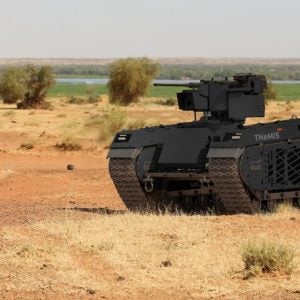Simulators Could End Training on Live Animals
New high-tech simulation devices are raising hope among critics that the practice of teaching Navy corpsmen and Marines to treat trauma patients by slicing into live, anesthetized pigs and goats will come to an end.
The Defense Department uses more than 6,000 animals a year for combat-trauma training, according to congressional representatives and animal-rights groups that have criticized the practice as inhumane. But high-tech medical task trainers now let students learn specific medical procedures, like unblocking airways, stopping hemorrhages or treating patients with amputated limbs under extremely realistic conditions.
One such device, the Human Worn Partial Task Surgical Simulator, or "cut suit," developed by Strategic Operations Inc., replicates human organs and blood vessels. The company’s website claims it is "the most realistic way to simulate the look, feel and smell effects of severe traumatic events on a live human," while allowing corpsmen and Marines to perform real procedures.
A recent study at Rocky Vista University’s College of Osteopathic Medicine in Parker, Colo., found that second-year medical students who used the "cut suit" as a surgical simulator in training were better skilled and more prepared for stressful clinical rotations. "With each day of exposure to stressful training scenarios, students reported feeling incrementally less stressed and more confident," researchers wrote in the July edition of the Journal for Healthcare Education, Simulation and Training.
In mid-July, the contractor used the simulator during a trauma-care training event here for corpsmen and Marines preparing to deploy to Afghanistan.
People for the Ethical Treatment of Animals, the Physicians Committee for Responsible Medicine and other groups say that simulators do a better job of teaching first responders how to treat traumatic battlefield wounds, especially when used in realistic and stressful training environments.
And that’s the type of environment that Strategic Operations tries to create. Course instructors say the realistic scenarios add to the stress that students encounter, preparing them to save more patients during the critical "platinum minutes" following a combat injury.
"The main focus here is they can prioritize the treatment, but also determine what casualties need to be evacuated," instructor Sal Ruiz said.
PETA says many trauma training courses that use animals are casually run and not set in realistic immersive combat environments. Also, the animals are not always fully anesthetized, as regulations require.
Defense officials defend the use of animals as vitally important.
"The use of live animals in medical training teaches warfighters to save lives on the battlefield and is an important part of comprehensive combat medic training, which is absolutely necessary to prevent significant loss of life," Lt. Col. Melinda Morgan, a Pentagon spokeswoman, wrote in an email.
But animal rights advocates say the Defense Department should fully embrace simulators, already used in many military courses and 98 percent of civilian medical training programs.
"The military is out of step with trends around the world, and with trends in military training," said Justin Goodman, associate director at PETA’s laboratory investigations department in Washington.
.


